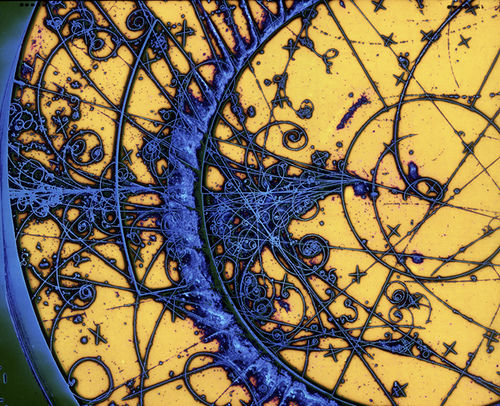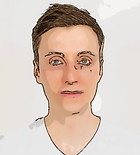
Vsevolod Chestnov
PHYSICAL REVIEW LETTERS
QUANTA MAGAZINE
QUANTA MAGAZINE

AMPLITUDES
@Padova
Education and Research
RESEARCH VISION
High energy particle collisions are the ideal framework for accessing new information on matter constituents and forces of Nature. Advances in Theoretical Physics depend on our ability to describe the scattering processes involving many light and heavy particles at very high accuracy.
Theoretical Physicists calculate scattering amplitudes, numbers that are related to the probabilities of different aftermath of particle scattering, namely, encoding the chance that a certain set of particles will turn into certain other particles after an impact. A convenient way to represent particle collisions is by means of Feynman diagrams, drawing pictures of the various ways particles can transform or mix during an interaction, characterized by subsequent phases of absorptions and emissions of other particles. Evaluating scattering amplitudes amounts to determine the likelihood of the different sketches, and then summing them up. Diagrams painted like trees represent functions that are simple to evaluate; diagrams shaped like electrical circuits, with closed loops, instead, represent complicated functions, multi-variate integrals, dubbed Feynman integrals. The higher the number of the considered loops within scattering amplitudes evaluation, the more faithful the theoretical description of the natural phenomena will be. Yet, the more demanding will be the mathematical and the computational efforts required to evaluate Feynman integrals.
The diagrammatic approach adopted for describing the collisions between elementary particles, very surprisingly, turn out to be applicable also to the description of astrophysical phenomena, like the gravitational collapse of a binary system of massive objects, such as a black-hole/neutron-star pair, which, after merging, give rise to Gravitational Waves: understanding the dynamical conditions ruled by general relativity, which determine the structure of the emitted waves, therefore also depends on our ability to evaluate a special set of Feynman diagrams.
The mathematical methods required to describe scattering events which take place from the smallest to the largest scale of the Universe benefit of concepts borrowed from the rich research in disciplines like Number Theory, Differential Geometry, Algebraic Geometry and Topology. Algorithmic implementation of novel computational ideas, simulations and large scale calculations benefit of the novel strategies emerging in Computer Science, Data Science, and AI.
Our research is highly interdisciplinary and open to new applications and to new contaminations from other fields of Natural and Social Sciences.
Our

taken from Schutterstock
TEAM MEMBERS

PIERPAOLO MASTROLIA
Professor
Tel: +39 049 8277192

FEDERICO GASPAROTTO
PhD Student

MANOJ K. MANDAL
Fellini INFN Fellow

LUCA MATTIAZZI
PhD Student

VSEVOLOD CHESTNOV
Stars-DFA Fellow

HENRIK MUNCH
PhD Student
Formerly in Padova

HJALTE FRELLESVIG
NBI - Carlsberg Fellow

STEFANO LAPORTA
Senior Expert
CONTACT
OUR ADDRESS
Department of Physics and Astronomy Galileo Galilei
University of Padova
via Marzolo 8,
35131 Padova, Italy
For any general inquiries, please fill in the following contact form: